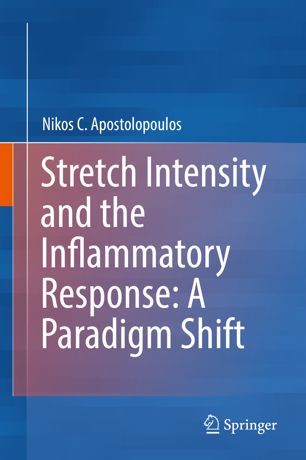مشاهده سبد خرید “Therapie der Depression: Praxisbuch der Behandlungsmethoden 2016” به سبد خرید شما اضافه شد.
Stretch Intensity and the Inflammatory Response: A Paradigm Shift 2019
دانلود کتاب پزشکی شدت کشش و پاسخ التهابی: یک تغییر پارادایم
دسته: پزشکی, پزشکی ورزشی
| نویسنده |
Nikos C. Apostolopoulos |
|---|
| تعداد صفحهها |
231 |
|---|---|
| نوع فایل |
|
| حجم |
7 Mb |
| سال انتشار |
2019 |
89,000 تومان
دانلود ۳۰.۰۰۰ کتاب پزشکی فقط با قیمت یک کتاب و ۹۹ هزار تومان !
توضیحات
در این دستنوشته، پزشکان و دانشجویان علاقهمند به رشتههای پزشکی ورزشی و توانبخشی و حرکت شناسی و همچنین مربیان و ورزشکاران با مفاهیم مختلفی از جمله انتقال مکانیکی، التهاب، سیتوکینهای پیش و ضد التهاب، کالپازها، ماتریکس خارج سلولی، نوتروفیلها و … آشنا میشوند. ماکروفاژها، اتصال آنها به کشش، و بدون شدت کشش سیما. اگرچه پارامترهای کمی تمرین، مدت زمان و تکرار مهم هستند، معیار کیفی شدت (“مقدار”) که نویسنده پیشنهاد می کند در نهایت نگرانی بیشتری دارد. شدت، سرعت و میزان نیرو ممکن است مسئول بازیابی، بازسازی و انطباق مناسب بافت اسکلتی عضلانی از تمرین، مسابقه یا توانبخشی ناشی از آسیب باشد. تحقیقات نشان میدهد که نیروی بیش از حد باعث ایجاد یک پاسخ التهابی میشود که با واکنشهای بیوشیمیایی همراه است که محرک مکانیکی را تحریک میکند. هدف این دستنوشته دو چیز است: شروع بحث در مورد اهمیت کشش شدید در رابطه با بازیابی، بازسازی، و سازگاری مناسب، و پیشنهاد اینکه محققان باید نقش بالقوه آن را در درمان چندین مورد بررسی کنند. بیماریهای اسکلتی عضلانی التهابی و غیر التهابی (تاندونیت) مکرر و غیره.
توضیحات(انگلیسی)
In this manuscript, practitioners and students who are concerned with sports and rehabilitation medicine, kinesiology, as well as coaches and athletes, are introduced to numerous concepts, including mechanotransduction, inflammation, pro- and anti-inflammatory cytokines, calpains, the extracellular matrix, neutrophils and macrophages, and their relevance to stretching, particularly stretching intensity. Although the quantitative parameters of training, duration, and frequency are important, it is the qualitative criterion of intensity (“how much”) that the author suggests is ultimately of greater concern. Intensity, the rate and magnitude of force, may be responsible for the proper recovery, regeneration, and adaptation of the musculoskeletal tissues from training, competition, or rehabilitation from injuries. Research suggests that too much force results in the stimulation of an inflammatory response, one associated with a biochemical feedback emerging from a mechanical stimulus. The intent of this manuscript is twofold: to initiate the discussion of the importance of stretching intensity with regard to proper recovery, regeneration, and adaptation, and to suggest that researchers need to explore its potential role in addressing numerous inflammatory (RA) and non-inflammatory (OA, recurrent tendinitis etc.) musculoskeletal conditions as well.




